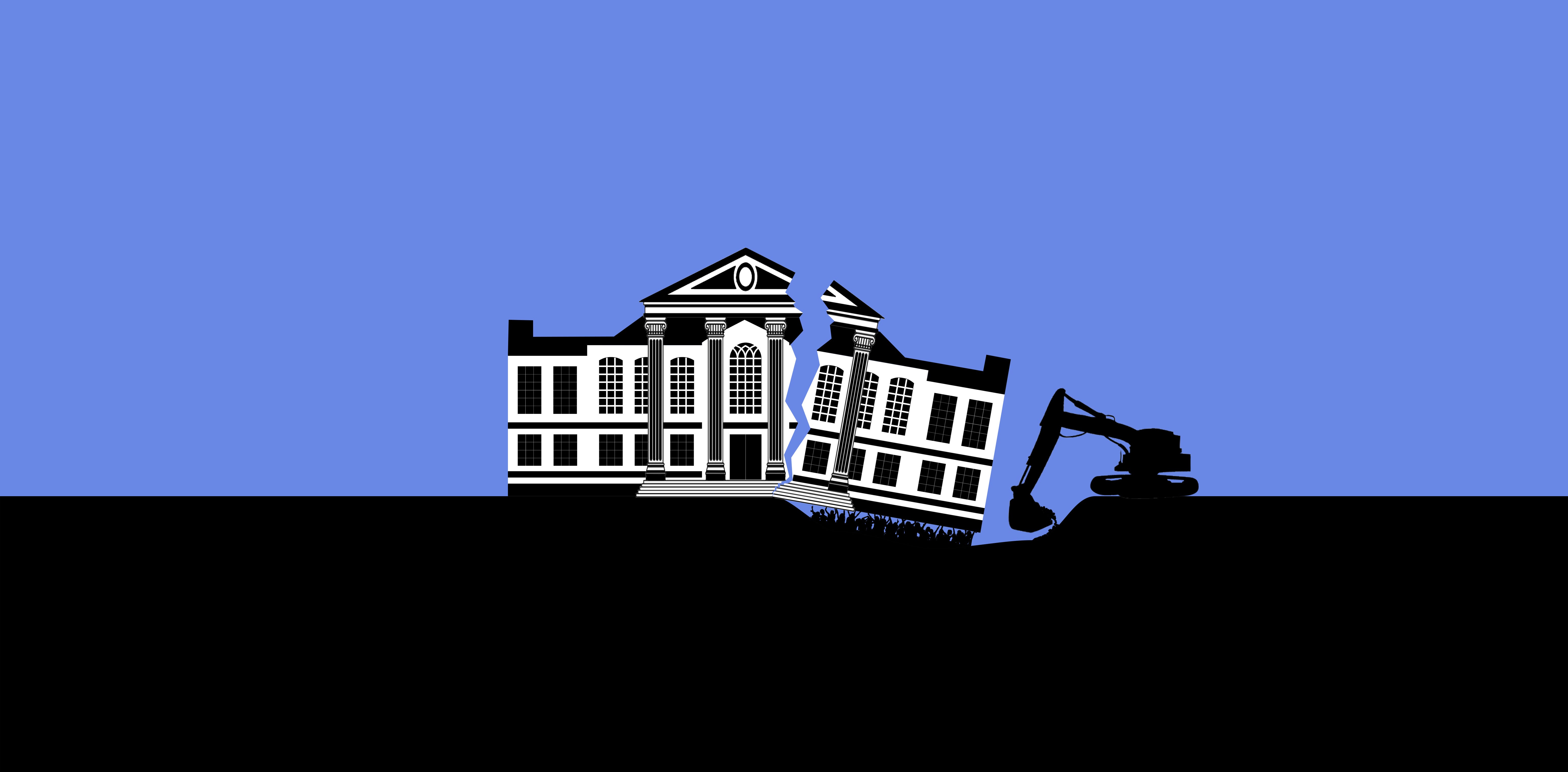
Dear Commons Community,
The American Association of University Professors (AAUP) published an article entitled, The purge of higher education: What do we lose when small colleges close? in the current edition of Academe. Written by Eva-Maria Swidler, it takes a candid look at recent college closings and what they mean for higher education especially smaller schools that are committed to the liberal arts. Here is an excerpt.
“The litany of small colleges that have closed in just the last three years is chilling: Burlington, Green Mountain, Mount Ida, and College of New Rochelle are among those that have closed in the Northeast alone. State college systems in Alabama, Georgia, Vermont, and Wisconsin have shuttered or merged smaller campuses; other systems, including the Pennsylvania State system, are threatening to do so. Hampshire and Goddard Colleges teeter on the brink, searching for “partners” and rallying their alumni, while Marlboro seems set to be absorbed into Emerson College. Antioch and Sweet Briar are hanging on, but only barely.
The proportion of students who are liberal arts majors is falling, so it is no surprise that colleges focused on the liberal arts are under immense pressure. Simultaneously, small colleges are in a situation that might be described as a higher education version of the admonition to “get big or get out.” Finally, some colleges that are respected but not prestigious are discovering that storied histories and good reputations aren’t enough to keep them viable. All these trends are forcing a growing number of liberal arts colleges to close. But why? Why are so many institutions going under now, at a time when the drumbeat in favor of virtually universal college education is increasing?
Let’s briefly look at three pieces of common wisdom. The most frequently offered explanation for the panic in higher education is that there just aren’t enough students to go around. Numbers of high school graduates are falling, especially in some areas of the country; public skepticism is growing about taking on the high levels of student debt that are often required; and fewer adult students have been returning to college since the recession ended. All of these observations are true enough, but they don’t explain why non-elite liberal arts colleges should be the ones to bear the brunt of the damage. Another familiar explanation for the struggles of liberal arts colleges is the preoccupation of students and parents alike with marketable job skills. Although the beating that teachers have taken in the press has notably reduced the number of education majors, other degree programs that yield certifications and easy job eligibility are doing well, as are at least some of the STEM majors that the public has been assured will be in demand by employers, although those graduates don’t do particularly better than anyone else in the long term. In a society with little confidence in the job market, the liberal arts are facing tough times.”
Swidler makes a number of good points in this article and lays out the pressures (enrollment, funding, curriculum) that are forcing many colleges to address their future viability.
Tony


